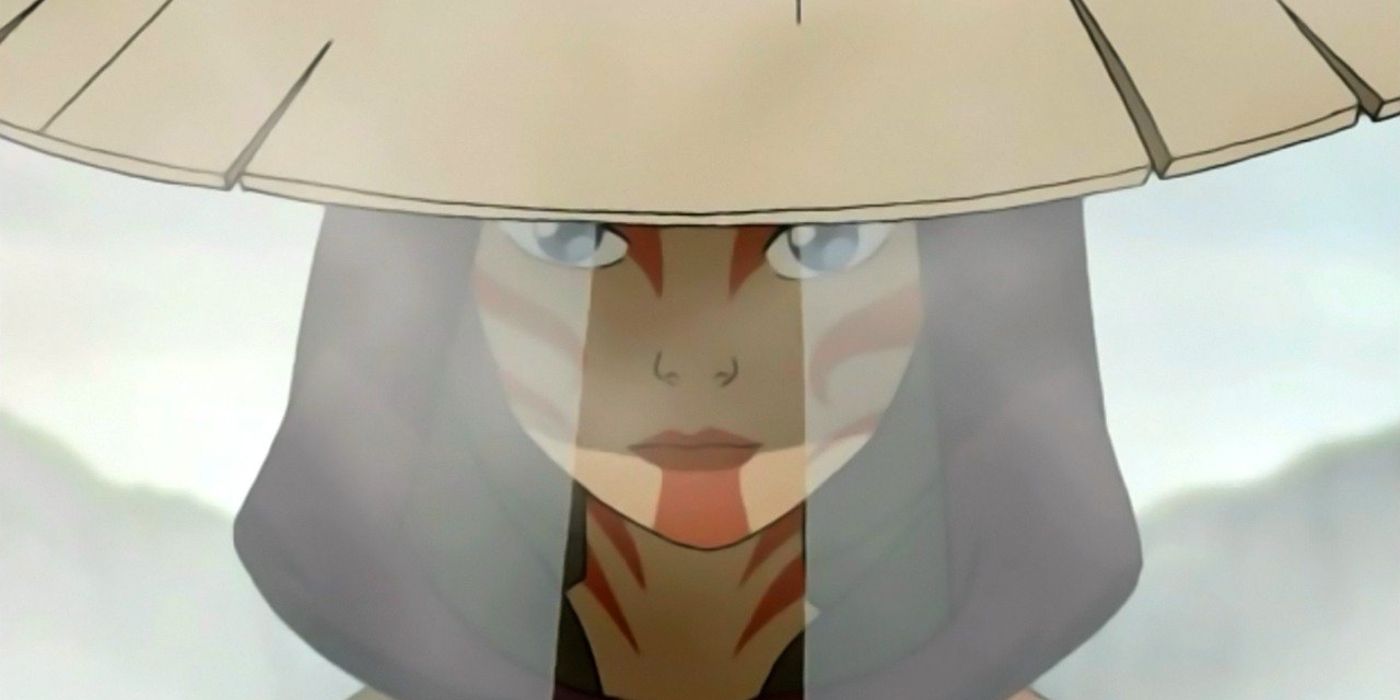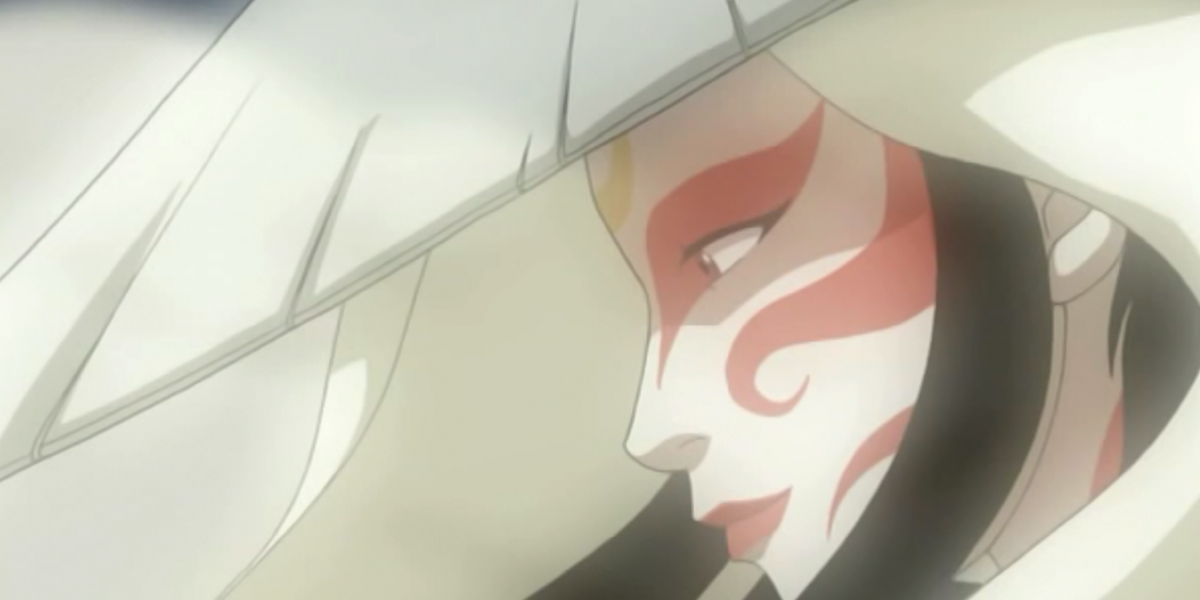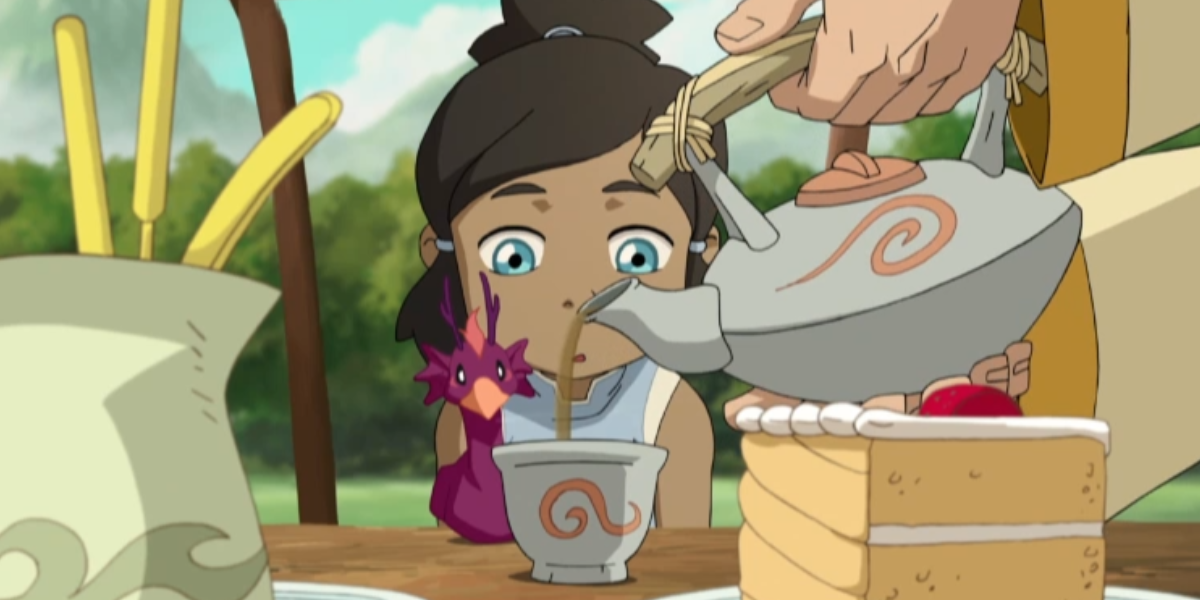Avatar: The Last Airbender always restrained itself when it came to just how deep it delved into the magical nature of the Spirit World, always hinting at its mythology without fully fleshing it out. The little tastes of knowledge and insights given into the more magical parts of the world whet the appetite of viewers so that the satisfaction of learning more about the mythology later proved all the greater. The Painted Lady, a spirit introduced in Season 3, serves as perfect example, because her unique and fascinating story could not be fully appreciated until the sequel series The Legend of Korra delved into deeper waters.
In the spirit's introductory episode, Team Avatar came across a small Fire Nation fishing village named Jang Hui located directly on the Jang Hui river. Beset by health and fishing troubles caused by the nearby Fire Nation factory that polluted the Jang Hui's waters, the villagers waited with quiet resolve for the Painted Lady, a patron spirit said to guard the river, to protect them. Their prayers were indeed answered, but not how they imagined.
Katara took on the guise of the Painted Lady, using her waterbending to heal the sick villagers and even sabotage the factory. Katara and the rest of Team Avatar maintained the ruse to scare off the Fire Nation soldiers and saved the town, but the villagers discovered the truth behind their lie soon after. As Katara sat by the river that night it seemed unclear if the Painted Lady ever actually existed, but when the spirit appeared to Katara in the moonlight and thanked her for her help, the question was answered.
The Painted Lady was never referenced directly for the rest of the series, nor in the sequel series The Legend of Korra or any of the tie-in comics. Even still, the creators managed to flesh out more of the Painted Lady's story in subtle ways. In the DVD commentary for The Legend of Korra episode "A New Spiritual Age," creator Brian Konietzko gave more backstory for the Painted Lady, saying that she as originally a human woman who transcended into the Spirit World after her death before becoming the river's guardian.
The tidbit came in connection to Iroh's appearance in the episode, as Iroh also lived on past his death in the Spirit World where he offered Korra his sage wisdom. This information deepened fans' appreciation of Iroh, whose spirituality provided some of the original best moments, while also showing just how detailed and interconnected the stories within Avatar could be.
As Iroh offers his advice to Korra, the Avatar takes the form of a small child who sits down for a tea party. As Iroh pours her tea, he uses a teapot that keen-eyed fans would recognize as the same vessel the first Avatar, Wan, used to contain the shrunken and damaged form of Raava 10,000 lives beforehand. To connect details even further, the symbols on the teapot and tea cup and evocative of the same symbols the Painted Lady's painted markings.
The connections between spirits and humans, and the harmony they can find in the depths of spirituality, serves as one of the most beautiful and peaceful messages within the franchise. The Painted Lady's own hands-off approach to protecting her village, subtly guiding Katara and her friends into doing the right thing rather than producing a show of force against the Fire Nation factory on her own speaks to that message. Sometimes when someone does their best, it's hard to tell they've done anything at all, and few stories in Avatar demonstrate that as well as the Painted Lady's.



